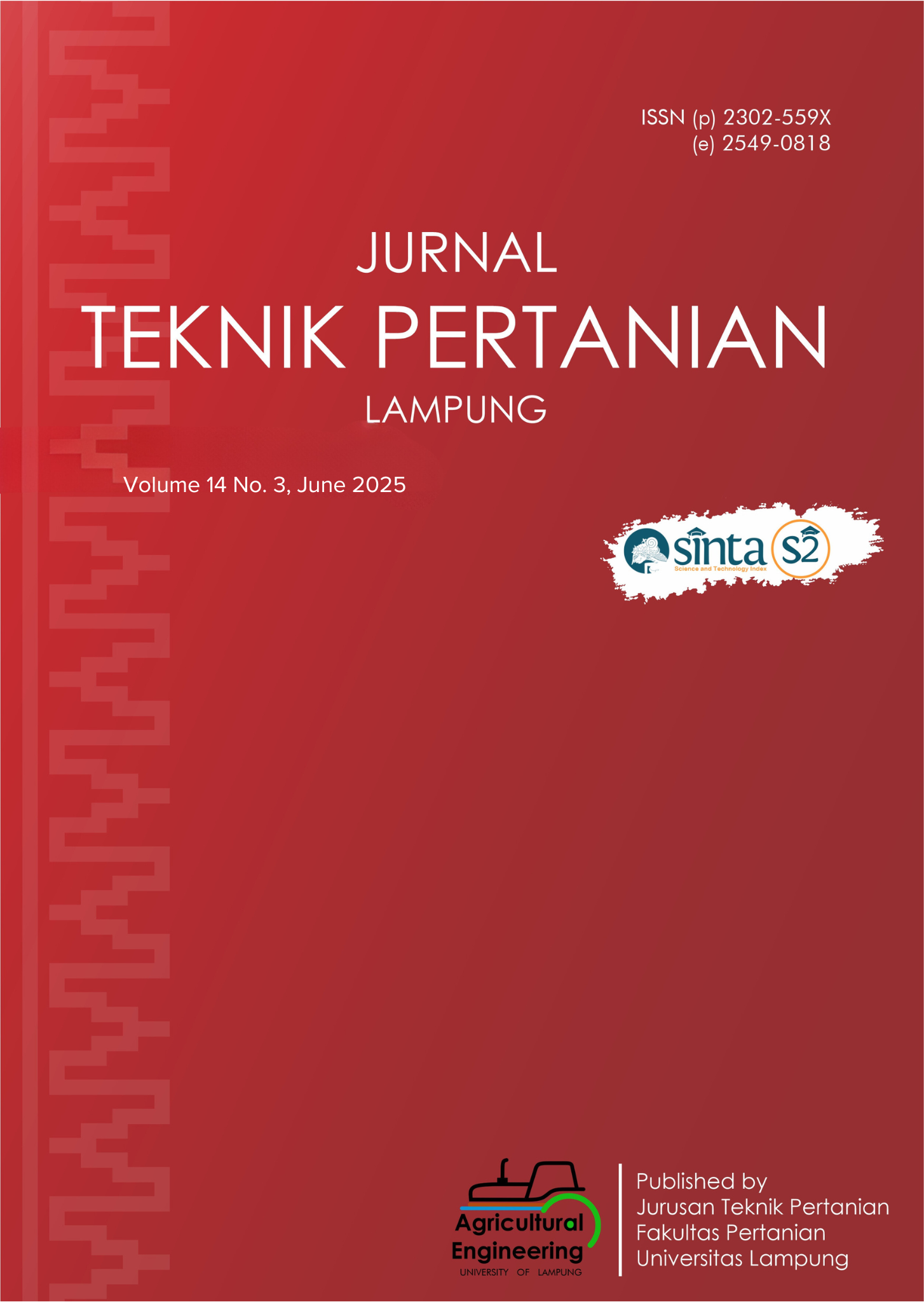The Impact of Geometry Engineering on Combustion Efficiency and Emissions: Performance Evaluation of Axial Diffuser Tube, Perforated Distribution Node, and Symmetrical Axial Radiator
DOI:
https://doi.org/10.23960/jtep-l.v14i3.744-754 Abstract View: 185
Abstract View: 185
Abstract
With increasing environmental concerns about emissions, improving combustion systems for alternative fuels, such as used engine oil, has become imperative. Investigating innovative burner designs to enhance fuel-air mixing, reduce emissions, and stabilize performance presents challenges due to high viscosity and incomplete combustion. However, previous research has not adequately addressed the role of burner head geometry in mitigating these problems. A combination of experimental tests and computational fluid dynamics (CFD) simulations was used to evaluate the performance. This study aims to fill the gap by evaluating the effects of three burner head designs—axial diffuser tube, perforated distribution node, and symmetrical axial cooler—on combustion efficiency and emissions. The results indicate that the axial diffuser tube achieved the highest efficiency (94.3%) and lowest emissions (NOx: 128 ppm, CO: 52 ppm, PM: 18 μg/m3) due to uniform heat distribution and increased turbulence. The perforated distribution node showed a balanced performance, with an efficiency of 91.7% and moderate emissions (NOx: 145 ppm, CO: 65 ppm, PM: 24 μg/m³). Meanwhile, the symmetric axial cooler, designed for thermal stability, showed lower efficiency (89.6%) and higher emissions (NOx: 167 ppm, CO: 78 ppm, PM: 30 μg/m³). The results indicate the importance of burner engineering in balancing efficiency and emissions control. The results of this study support sustainable combustion technologies for industrial and domestic applications, and underscore the global transition to clean energy solutions.
Keywords: Burner head design, CFD simulations, Combustion efficiency, Emissions reduction, Geometric engineering, Waste automotive oil.
Downloads
References
Al-Naffakh, J., Al-Fahham, M., & Abed, Q.A. (2020a). Burner rim geometry effect on flame stability. IOP Conference Series: Materials Science and Engineering, 671(1), 012003. https://doi.org/10.1088/1757-899X/671/1/012003
Al-Naffakh, J., Hasan, K.S., Al-Fahham, M., & Al-Qasab, M.R. (2020b). Improve and reduce the economic cost and pollutants of a swirl burner. IOP Conference Series: Materials Science and Engineering, 928(2), 022013. https://doi.org/10.1088/1757899X/928/2/022013
Anjum, M.S., Ali, S.M., Imad-ud-din, M., Subhani, M.A., Anwar, M.N., Nizami, A.-S., Ashraf, U., & Khokhar, M.F. (2021). An emerged challenge of air pollution and ever-increasing particulate matter in Pakistan: A critical review. Journal of Hazardous Materials, 402, 123943. https://doi.org/10.1016/j.jhazmat.2020.123943
Bilodeau, R.A. (2020). Designing multifunctional material systems for soft robotic components: A dissertation. Purdue University. https://doi.org/10.25394/PGS.12226964.v1
Boretti, A. (2024). Advancements in E-Fuel combustion systems for a sustainable energy future. International Journal of Hydrogen Energy, 79, 258–266. https://doi.org/10.1016/j.ijhydene.2024.07.006
Boretti, A., & Huang, A. (2024). AI-driven DfAM of aeronautical hydrogen gas turbine combustors. International Journal of Hydrogen Energy, 77, 851–862. https://doi.org/10.1016/j.ijhydene.2024.05.437
Covarrubias, C., & Romero, C. (2007). Burner performance evaluation using test code. Journal of Energy Engineering, 133(2), 7881. https://doi.org/10.1061/(ASCE)0733-9402(2007)133:2(78)
Gupta, S., & Kumar, M. (2023). Computational fluid dynamics: Innovations in numerical techniques, multi-phase flow modeling, and prospects for sustainable energy applications. Journal of Sustainable Urban Future, 13(9), 1–20.
Hasan, K.S., Al-Fahham, M., Abd Al-Wahid, W.A., Khwayyir, H.H., Kareem, A.R., Hasan, S.S., & Al-Naffakh, J. (2024). Experimental study on the combustion of gaseous based fuel (LPG) in a tangential swirl burner of a steam boiler. Journal of Thermal Engineering, 10(5), 1226-1240. https://doi.org/10.14744/thermal.0000863
Ismail, H., & Nguyen, M.Q. (2023). A comparative analysis of efficiency in fluid dynamic devices: Experimental and computational approaches. Quarterly Journal of Emerging Technologies & Innovations, 8(3), 85–102.
Jafar, I., Al-Naffakh, J., Al-Qassab, M.R., & Al-Makhzoomi, Z.M. (2024). Comparative analysis of combustion properties between waste automotive oil and light diesel oil as alternative fuels. Journal of Research in Technology and Engineering, 2(12), 1–11.
Lee, J.-H., & Han, M.-W. (2023). Design and evaluation of smart textile actuator with chain structure. Materials (Basel, Switzerland), 16(16). https://doi.org/10.3390/ma16165517
Malik, M.A.I., Zeeshan, S., Khubaib, M., Ikram, A., Hussain, F., Yassin, H., & Qazi, A. (2024). A review of major trends, opportunities, and technical challenges in biodiesel production from waste sources. Energy Conversion and Management: X, 23, 100675. https://doi.org/10.1016/j.ecmx.2024.100675
Mohan, R.K., Sarojini, J., Ağbulut, Ü., Rajak, U., Verma, T.N., & Reddy, K.T. (2023). Energy recovery from waste plastic oils as an alternative fuel source and comparative assessment of engine characteristics at varying fuel injection timings. Energy, 275, 127374. https://doi.org/10.1016/j.energy.2023.127374
Raman, V., & Hassanaly, M. (2019). Emerging trends in numerical simulations of combustion systems. Proceedings of the Combustion Institute, 37(2), 2073–2089. https://doi.org/10.1016/j.proci.2018.07.121
Rashwan, S.S., Abdelkader, B., Abdalmonem, A., Abou-Arab, T.W., Nemitallah, M.A., Habib, M.A., & Ibrahim, A.H. (2022). Experimental and statistical ANOVA analysis on combustion stability of CH4/O2/CO2 in a partially premixed gas turbine combustor. Journal of Energy Resources Technology, 144(6), 062301. https://doi.org/10.1115/1.4051755
Rb, J.R., Agu, J.M., Rajeev, D., Sivakumar, A., & Kennedy, S.M. (2024). A complete overview of self-healing composites including its models in aeronautical systems. Polymer-Plastics Technology and Materials, 63(9), 1143–1174. https://doi.org/10.1080/25740881.2024.2325427
Seesaard, T., Kamjornkittikoon, K., & Wongchoosuk, C. (2024). A comprehensive review on advancements in sensors for air pollution applications. Science of The Total Environment, 951, 175696. https://doi.org/10.1016/j.scitotenv.2024.175696
Xiao, S., Sun, W., Du, J., & Li, G. (2014). Application of CFD, Taguchi method, and ANOVA technique to optimize combustion and emissions in a light duty diesel engine. Mathematical Problems in Engineering, 2014(1), 502902. https://doi.org/10.1155/2014/502902
Zhu, R., Zhao, S., Tang, X., Gao, F., Wang, W., Sun, L., & Yi, H. (2024). Advancements in electrothermal heterogeneous catalytic pollutants: Efficient conductor selection, novel device design and synergistic mechanism studies. Journal of Environmental Chemical Engineering, 12(5), 113510. https://doi.org/10.1016/j.jece.2024.113510
Zhu, X., Du, J., Yu, Z., Cheng, Y.-B., & Wang, Y. (2023). NOx emission and control in ammonia combustion: State-of-the-art review and future perspectives. Energy & Fuels, 38(1), 43–60. https://doi.org/10.1021/acs.energyfuels.3c03104
Downloads
Published
How to Cite
Issue
Section
License
Authors who publish with this journal agree to the following terms:
Authors retain copyright and grant the journal right of first publication with the work simultaneously licensed under a Creative Commons Attribution-ShareAlike 4.0 International Lice that allows others to share the work with an acknowledgement of the work's authorship and initial publication in this journal.
Authors are able to enter into separate, additional contractual arrangements for the non-exclusive distribution of the journal's published version of the work (e.g., post it to an institutional repository or publish it in a book), with an acknowledgement of its initial publication in this journal.
Authors are permitted and encouraged to post their work online (e.g., in institutional repositories or on their website) prior to and during the submission process, as it can lead to productive exchanges, as well as earlier and greater citation of published work (See The Effect of Open Access).
Jurnal Teknik Pertanian Lampung

JTEPL is licensed under a Creative Commons Attribution-ShareAlike 4.0 International License.













